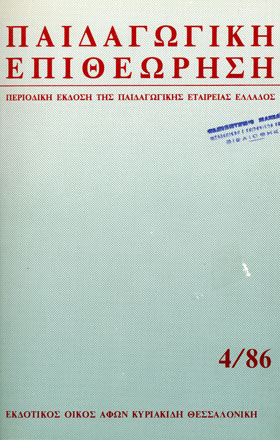Το ενιαίο σχολείο στην Ελλάδα
Main Article Content
Περίληψη
1. The main features of Comprehensive Education and its application internationally. 2. Brief historical review of its application in Greece: It is shown that the Greek 6-year primary school had been always of a comprehensive character, while the gymnasium (3-year lower secondary school) became more comprehensive (not only common curriculum, but also abolition of entrance examinations, compulsory attendance, free tuition and books etc.) by the Educational Reform Act of 1964. 3. Regarding the present situation, an account is made of the following measures taken by the Ministry of Education in the last four years, which constitute further steps towards a comprehensive type of education: - New curricula and school books more closely related to life and its needs. - Fuller application of the educational vocational guidance in closer relation to social and vocational life. - Abolition of the entrance examinations to the Lyceum (3-year upper secondary school). - Experimental application of a comprehensive type of Lyceum (Comprehen¬sive Integrated Lyceum - C.I.L.) aiming at a harmonious combination of general education and pre-vocational training at the upper secondary education level. The experimentation is being made with cooperation of the European Community Commission services and the O.E.C.D. - Organization, within the school, of appropriate instructional help for the «weak» pupils, as well as "post-lyceum preparatory centers" for secondary school leavers who fail to enter the higher education and wish to try again. Both measures aim at counterbalancing unequal opportunities. 4. As regards the future perspectives, the indications are in favor of comprehensive education not only during but also after compulsory schooling: The present policy is for the Comprehensive Integrated Lyceum to be, if not the only, the main type of school at the upper secondary level.
Article Details
Τεύχος
Ενότητα
Άρθρα
